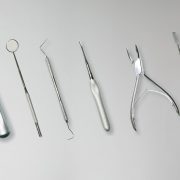Introduction
In conventional endodontics, diagnosis and treatment planning have long relied on two‑dimensional (2D) periapical radiographs and panoramic imaging. While useful, these modalities suffer from superimposition, distortion, and limited ability to reveal complex anatomical variations. In recent decades, Cone Beam Computed Tomography (CBCT) has emerged as a powerful three-dimensional imaging modality that overcomes many of the shortcomings of 2D imaging, especially in challenging cases.
Working of CBCT
CBCT employs a cone-shaped X-ray beam that rotates around the patient’s head, capturing numerous projection images from multiple angles. These are reconstructed into a volumetric 3D dataset, from which cross-sectional slices can be viewed in any orientation. It offers high spatial resolution with relatively low radiation dose compared to medical CT. In endodontics, small field-of-view (FOV) scans are preferred to minimize exposure and improve resolution.
Applications of CBCT in Dentistry
- Implant planning – evaluating bone volume and proximity to vital structures.
- Oral and maxillofacial surgery – assessment of cysts, tumors, fractures, impacted teeth.
- Orthodontics – tooth position, root inclinations, skeletal relationships, airway assessment.
- Periodontics – evaluation of alveolar bone defects and furcation involvement.
- TMJ imaging – condylar morphology and osseous changes.
- Airway analysis – evaluation in sleep apnea and airway obstruction.
- Endodontics – diagnosis and treatment planning in complex root canal systems.
Specific Role of CBCT in Endodontics
CBCT has become transformative in endodontics for diagnosis, planning, intraoperative guidance, and follow-up. It helps detect periapical lesions, root canal anatomy, resorption defects, fractures, and procedural mishaps.
- Detection of periapical lesions undetectable on 2D radiographs.
- Assessment of root canal morphology and accessory canals.
- Localization of resorption defects (internal/external).
- Identification of root fractures and missed canals.
- Guidance in retreatment and management of procedural errors.
- Evaluation of healing outcomes and volumetric lesion changes over time.
Advantages of CBCT in Endodontics
In the field of endodontics, CBCT is now increasingly recognized as an essential adjunct — not as a replacement for conventional radiography, but as a complement in challenging or ambiguous cases. Its ability to visualize root canal anatomy, periapical lesions, resorptive defects, and procedural mishaps in 3D offers clinicians a new dimension in diagnosis, planning, and evaluation.
- Three-dimensional imaging without anatomical superimposition.
- High diagnostic accuracy for complex cases.
- Improved treatment planning and visualization.
- Facilitates guided and minimally invasive procedures.
- Objective assessment of healing during follow-up.
Disadvantages of CBCT
Like any other investigative test, CBCT also has certain limitations which must be discussed:
- Higher radiation dose than conventional radiography.
- Artifacts from metallic restorations or gutta-percha.
- Limited soft tissue contrast.
- High cost and limited availability.
- Requires skilled interpretation and carries risk of overdiagnosis.
Case Examples
These CBCT outlines help us to diagnose crack lines , craze lines, fractures, accessory canals, incomplete obturation s , apical portal exits, split canals which cannot be diagnosed through OPG or RVG.
Incomplete obturation
Accessory canals and apical portal exits
Craze lines and cracks
Conclusion
CBCT has revolutionized endodontic imaging by providing detailed 3D visualization of root and periapical structures. It enhances diagnostic precision, guides clinical procedures, and supports objective healing assessment. However, due to radiation exposure, cost, and potential artifacts, its use must be justified and guided by the ALARA principle. When applied judiciously, CBCT significantly elevates the standard of endodontic care.
References
- Patel S, Dawood A, Mannocci F, Wilson R, Pitt Ford T. Detection of periapical bone defects in human jaws using cone beam computed tomography and intraoral radiography. Int Endod J. 2009.
- Use of Cone Beam Computed Tomography in Endodontics.
- The Applications of Cone‑Beam Computed Tomography in Dentistry.
- The Importance of Cone‑Beam Computed Tomography in Endodontic.
- AAE / AAOMR joint position statement: The Impact of Cone Beam Computed Tomography in Endodontics.





















Comments